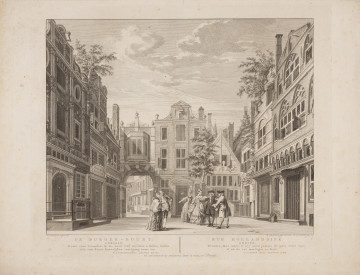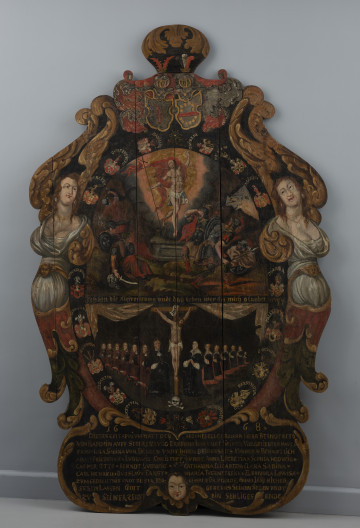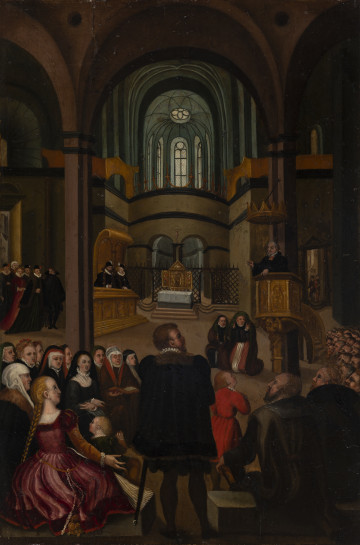
Die Burger-Buurt Adriaan (Rue Hollandoise Adrien) | Amsterdam street (Dutch street Adriaan)
1775
National Museum in Szczecin
Part of the collection: Renaissance and Baroque painting
Caritas Romana tells the story of Pero, the daughter of Cymon, who was sentenced to death by starvation, and who secretly breastfed her father during visits to prison. Her nobility and dedication convinced the authorities to release the convict. The story is taken from a work by the Roman writer Valerius Maximus (c. 20 BC-c. 50 AD). Facta et dicta memorabilia, in which the author described ancient figures and events, showing them as examples of ethical attitudes. The story of Pero has been used in literature and art since antiquity to illustrate the devotion, love and care shown to parents by their children. Representations of Cimon and Pero have been discovered among the wall paintings in Pompeii, among others. This theme, referred to as Caritas Romana (Roman mercy), made a comeback in Renaissance art and became particularly popular in 17th century Italy and Flanders, thanks to works by artists such as Caravaggio, Guido Reni and Peter Paul Rubens.
The prototype for the painting in question was a work by Simon Vouet (1590-1649), a French painter working between 1612 and 1627 in Italy, mainly in Rome. The original, thought to be lost, was probably painted around 1624 – at a time when Vouet was elected director of the Roman Academy of St Luke. In 1626, a print based on this work was produced by Claude Mellan (1598-1688), a French draughtsman, engraver and painter who had studied with Vouet in Rome from 1624 and produced engravings according to his compositions. The Szczecin copy is an almost faithful reproduction of the composition from Mellan's print. The only difference is the enlarged lower frame and the introduction of a stone block motif with a chain, clearly placing the scene in a prison. Despite the visible repainting, the painting presents a good level of academic painting.
Monika Frankowska-Makała
Author / creator
Object type
painting
Technique
oil technique
Material
canvas
Origin / acquisition method
legal transfer
Creation time / dating
Owner
Muzeum Narodowe w Szczecinie
Identification number
Location / status

1775
National Museum in Szczecin

1668
National Museum in Szczecin

3. ćwierć XVI wieku
National Museum in Szczecin
DISCOVER this TOPIC
National Museum in Szczecin
DISCOVER this PATH
Educational path